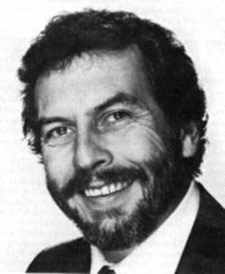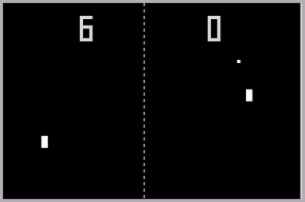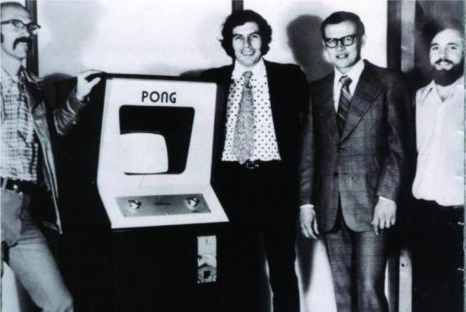| Nolan Bushnell and Atari |
| Written by Historian | |||
Page 1 of 2
There has always been a split in how the computing past and even the computing present is viewed. There is the serious academic and corporate view starting from Babbage and working its way to the present day though a series of large advanced machines and programming languages. Seen from this perspective the personal computer is something that descended from mainframe respectability. However the other view of reality is that the PC is the result of people playing with computers. Nothing more than an overgrown games console! In this alternative view it's people like Nolan Bushnell - co-inventor of the first electronic game - who are the true originators of the PC. Nolan Bushnell, born 5 February 1943, Utah
In the early 60s there were no computer games. Well there were but they ran on the huge mainframes of the time. I can still remember the first interactive computer game I played - it was text based and needed a whole 360 mainframe to make it happen! Nolan Bushnell also played computer games on a university computer - the difference is that he thought that it might be possible to shrink the whole lot into the size of a coin operated slot machine. But then, he was seriously into fun. Like many a young scientist Nolan liked spectacular experiments. His mother refused to tidy his room on the grounds that she might be electrocuted. An experiment with a home made liquid fuelled rocket lashed to a roller skate nearly ended in burning down the garage. At age ten he had an amateur radio licence and a good knowledge of electronics. The coupling of science and fun are often frowned upon but they do fit together very well - and fun is a powerful motivation. One of his best tricks was to tie a light bulb to a kite and try to convince the town of Utah that they were under alien attack - later on he found other ways of propagating space invaders. A little later his interests turned to skiing, basket ball and engineering. But even while at Utah State University he took courses on economics, philosophy and maths - a clear sign that fun and games were still on the agenda! He also took a course with Evans and Sutherland - the same two who influenced Gary Kildall and John Warnock and built a whole industry based on computer graphics. Nolan became a computer enthusiast, played space war and dreamed of making it more available. EntrepreneurLike Bill Gates, Nolan Bushnell also seems to have had an early passion for business. He started a company while still at college called Campus Company. It produced a college blotter that was given away free - Bushnell bagged some $3000 worth of advertising each time! With a $500 production cost he clearly understood the economics of making a profit! He also claims to have discovered the secret of keeping the money he made. "I was selling advertising during the day and I always felt that the best way to keep from spending money was... to have another job." So he got another job at an amusement park guessing peoples weights and ages. He was later put in charge of the park's games department and learned much about people's preferences for simple quick-to-play games. After graduating he tried to get a job with Disney - a hero of his. He was one of the few to take Walt Disney seriously as a purveyor of technology to the masses. Technology is first for fun and only secondly for serious use. This is certainly true - a huge part of the early electronics industry - hi-fi, tape recorders, CD, television - was about having fun. Bushnell said of Disneyland: "Although it's a place devoted to fun and frivolity it is really on the cutting edge of technology. People don't realise that frivolity is the gateway to the future, in that most future products don't start as necessities but as toys." He didn't get the job with Disney and had to settle for staid employment with Ampex - a high tech company designing tape recorders. In those days an Ampex was a serious heavy work horse professional tape machine with big spinning reels - about as far from Disney as you could be but notice it still about fun. Computer game visionaryDuring his time at Ampex he dreamed of starting his own business based on computer games. He considered a slot machine based on a $10,000 PDP mini but he still had the business sense to realize that this was a dream. Machines like the PDP were beginning to be used as games machines but mainly after hours in labs. He worked on games in his spare time but the technology of the time would have been frustrating. More straightforward was the slot machine circuit that he and a colleague, Ted Dabney, had built up. They placed traditional pin ball machines in bars and collected the proceeds every evening. Eventually he left Ampex, a secure high tech job, to pursue the games market full time. An early attempt at a computer game wasn't a great success. He worked for a time for a slot machine company but clearly didn't think much of it or its management - so he left that too. Bushnell decided that with Silicon Valley churning out ever shrinking electronics components and the availability of the early microprocessors that perhaps it was time to start the electronics game industry. His new company, co-founded with Ted Dabney, was going to be called Syzygy - which means an alignment of celestial bodies - but he quickly changed this to Atari when it was discovered that another company was already using Syzygy. Atari is a call in the game of Go (said by Bushnell to be his "favorite game of all time") much like "check" is in the game of chess. The firm had one employee, Al Alcorn, another ex-Ampex colleague and a very good electronics engineer. Bushnell thought of designing a car driving game but decided that this was too complicated - he was right! The game that they eventually decided on had two moving blobs - one ball and one bat - and that was about as much real time animation as could be managed with a reasonable amount of electronics. The game was, by today's standards, ridiculously simple. All you had to do was to move the bat to intercept the ball which then bounced around the screen. If you missed then the ball vanished and you lost a point. The game was called Pong and at the time it was revolutionary.
Pong
Bushnell explained the idea to Alcorn whose job was to turn the game idea into electronics. He also told Alcorn that he had a contract from GE to build a consumer product for them - he didn't, there was only a letter asking him to submit a proposal for a game. Alcorn fell for the ruse and worked hard - the machine was completed in 3 months. The bad news was that it needed a lot of electronics and couldn't possibly be sold as a consumer item. What is interesting about the early Pong machines is that they didn't use a software-based approach. Today if you wanted to implement Pong you would start out with a microprocessor complete with video controller electronics. The rest of the game would be constructed by writing a program to calculate the trajectory of the ball, test for collisions and animate the bat. The original Pong machines were built using much smaller electronic building blocks which generated the appropriate TV signal. Alcorn must have actually though in terms of placing a pulse in the correct place in the video signal - line number giving y co-ordinate and time from the start of the line giving the x co-ordinate. The algorithm for Pong is remarkably simple but using individual gates and counters it amounts to a lot of electronics. Bushnell couldn't get anyone interested in the game. So they put together a large arcade game version complete with old TV and slot machine and put the result in a bar.
Bushnell, Dabney and Alcorn with the Pong
Soon the primitive arcade game was such a draw that people were coming to the bar just to play it. They had a success on their hands - but the first electronic arcade game, not the consumer product that Bushnell really wanted. That had to wait for the microprocessor to be come cheap enough and powerful enough to replace the custom electronics. Still Atari made a lot of money from the arcade machines and managed to create a small games console version of the game in time to keep the profits rolling in.
<ASIN:0985597402> <ASIN:1491291311> <ASIN:0956507204> <ASIN:1908955910> <ASIN:158065066X> <ASIN:0812972155> <ASIN:1430210788> |
|||
| Last Updated ( Tuesday, 11 November 2014 ) |




